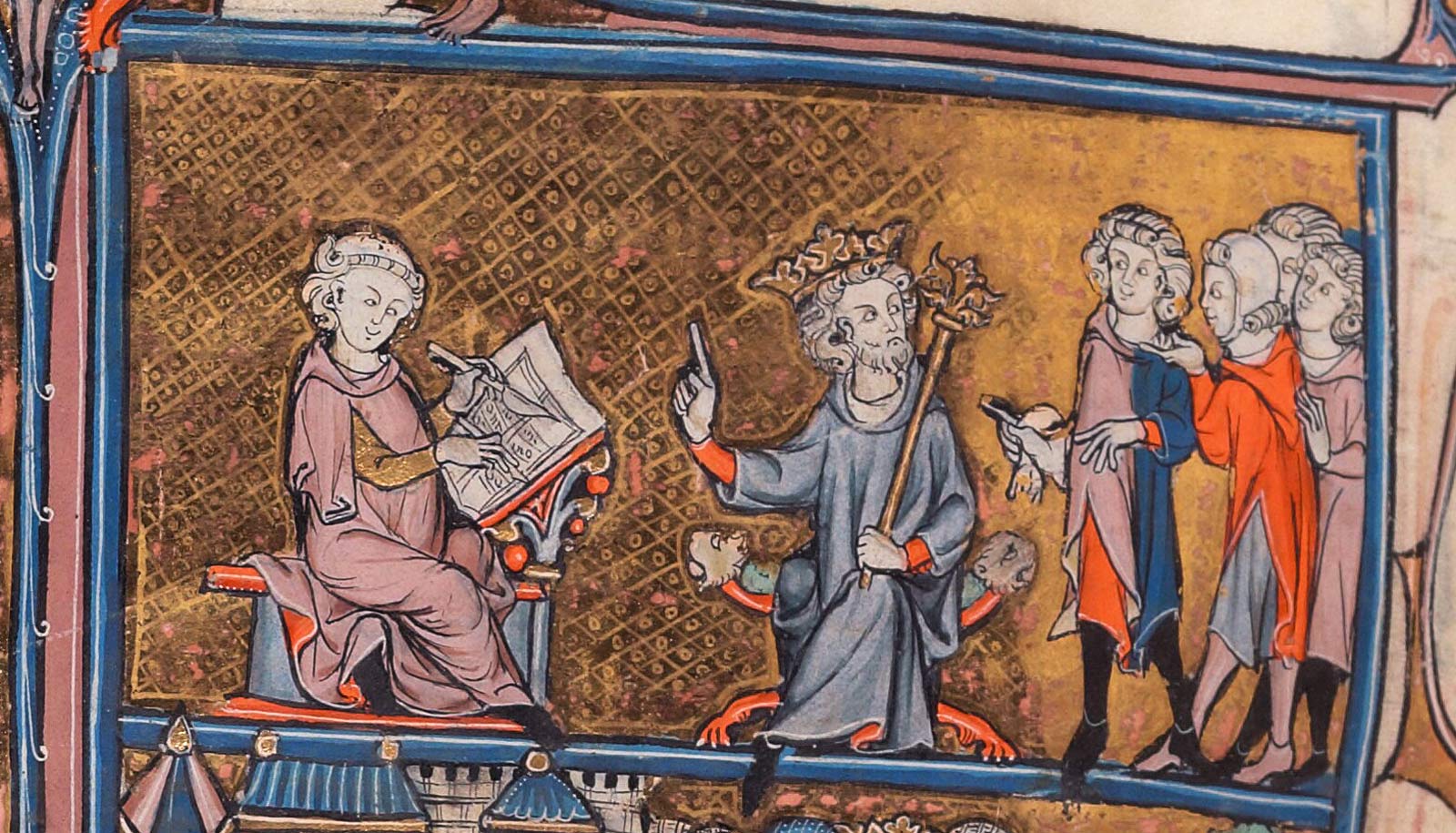The Middle Ages produced a staggering wealth of literary works in dozens of languages that spanned nearly 1,000 years. But no English translation has been available until now.
The Global Medieval Sourcebook (GMS) is an online, interactive, and open source collection of medieval texts and their translations. It primarily features shorter pieces—and offers non-experts a gateway into the literature of the Middle Ages.
“The intended audience of the Sourcebook is incredibly broad. It includes scholars, teachers, and students, but also people who are just generally interested in reading medieval texts. The idea is to make these accessible,” says Kathryn Starkey, chair of the German studies department at Stanford University and the director of the project.
The GMS incorporates medieval works from around the world, in such languages as Chinese, Arabic, Middle High German, Old English, Old French, Old Spanish, Latin, and Italian.
A favorite work of the GMS creators is Das Gänselein (“The Gosling”), a Middle High German tale in bawdy verse that pokes fun at the religious establishment of the time. Another is a collection of 12th-century Chinese anecdotes written by retired bureaucrat Hong Mai about the minutiae of daily life.
Medieval kids probably made these doodles
“The concept really is to create a global resource,” Starkey says. “We are trying to get as wide a spectrum as possible.”
The Sourcebook offers multiple points of entry into the featured texts: Readers can compare English translations with the original languages as well as with high-quality images of the medieval manuscripts themselves. In some cases, an audio recording of the work as it may have sounded in the Middle Ages is included. Each text is accompanied by an introduction and a bibliography with suggestions for further reading.
“We seek to provide enough information that users are able to understand the context and importance of each work,” Starkey says.
Besides just offering a practical introduction to previously untranslated medieval texts, the Sourcebook’s creators want to foster interest in the Middle Ages—and to change existing misconceptions about the period.
“There’s often an idea that there was a lack of interest in sensuality in the Middle Ages in favor of self-flagellation and 24-hour praying—or that people in the Middle Ages were unbelievably ignorant,” says Mae Lyons-Penner, a PhD student in comparative literature and the Sourcebook’s project manager. “These ideas are definitely challenged by the texts we have selected.”
Some medieval priests found nuns superior
Instead of painting the Middle Ages in a dreary light, the texts reveal the enormous degree of learning, fun-loving sensuality, and diversity of the era. And the project may have arrived just in time.
The popularity of television shows like Vikings and Game of Thrones show our fascination with medieval languages, aesthetics, and culture. However, representations of the Middle Ages in popular culture can be misinformed.
“Here, we are producing something that is a source of reliable information and allows people to take their interest further. It bridges the gap between what is widely accessible and what is unknown to anyone who is not an expert,” Lyons-Penner says. “We want others to be able to use our platform and our encoded texts for projects of their own.”
Starkey and Lyons-Penner ultimately hope to extend the GMS beyond Stanford and incorporate text submissions from other universities and scholars.
“We want people to explore, have fun, and familiarize themselves with the great diversity of texts and medieval thought through the website,” Starkey says.
Source: Emily Gooding for Stanford University



